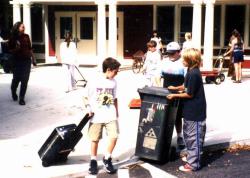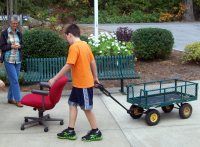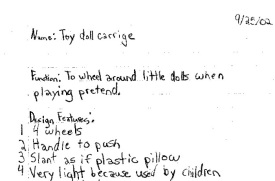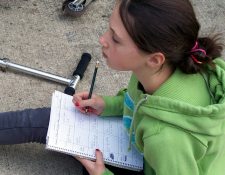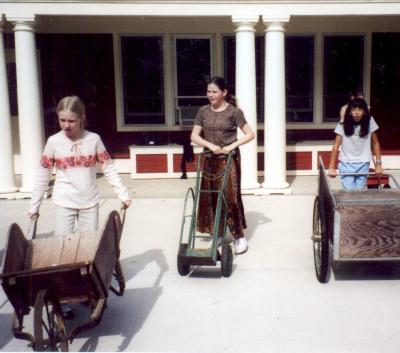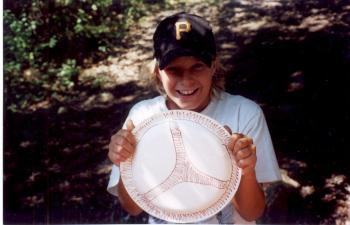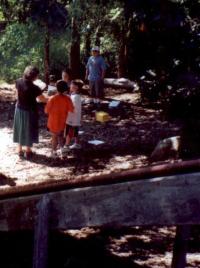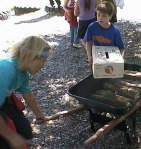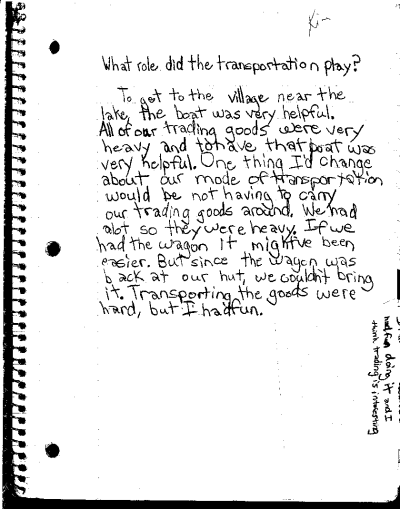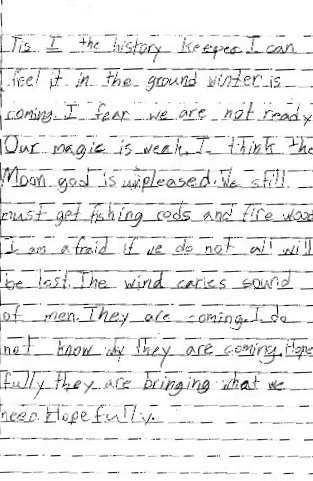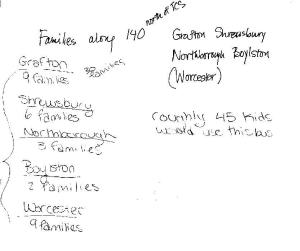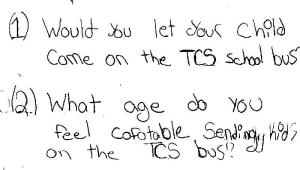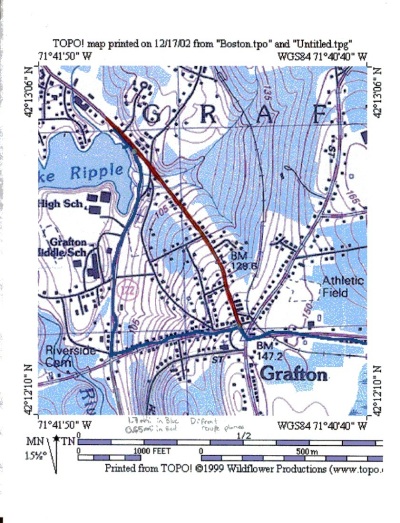For two weeks I’ve been trying to write about field trips to Boston during our transportation thematic studies. (This continues a recent post about Projects Time activities connected to transportation.) I keep coming back to two cautionary tales.
#1 I once heard of a class of eleven-year-olds studying metric units of measurement without any access to meter sticks. For that matter, no actual measurement going on, in a unit about measurement systems. Meters and centimeters had become mere abstract notions.
 At my school, we were all about real. If we were going to study physics, engineering, history, economics, and public policy, all through the lens of transportation, we would have the visceral, hands-on experience of transportation in all sorts of ways, from silly to sublime.
At my school, we were all about real. If we were going to study physics, engineering, history, economics, and public policy, all through the lens of transportation, we would have the visceral, hands-on experience of transportation in all sorts of ways, from silly to sublime.
We would design and draw towns and streets on a white-board-covered table, and then play on them with little cars and trucks, gleefully adding back-up beeping noises.
On individual field trips in our own neighborhoods, we would carry clipboards, stand on busy corners, and tally the passing cars–on the basis of how many people were traveling in each car. All those engines–almost all of them burning fossil fuels–how well or efficiently were they being used?
 Children who can’t legally drive are denied access to transportation in many rural and suburban areas–along with the elderly, the physically disabled, the poor. So we would spend a day using all the forms of public transportation we could get our feet on: commuter rail, and several different subway lines, and buses–reveling in the power we gained through these forms of access.
Children who can’t legally drive are denied access to transportation in many rural and suburban areas–along with the elderly, the physically disabled, the poor. So we would spend a day using all the forms of public transportation we could get our feet on: commuter rail, and several different subway lines, and buses–reveling in the power we gained through these forms of access. 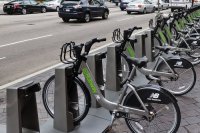
We would ride on elevators and escalators, and moving walkways if we could find them–and be thrilled by a line-up of Hubway bicycles.
 We would cross Boston Harbor with our faces into the wind, on one of the ferries that is a part of the MBTA. Our happy hearts would agree with Robert Louis Stevenson: For my part, I travel not to go anywhere, but to go. I travel for travel’s sake. The great affair is to move.
We would cross Boston Harbor with our faces into the wind, on one of the ferries that is a part of the MBTA. Our happy hearts would agree with Robert Louis Stevenson: For my part, I travel not to go anywhere, but to go. I travel for travel’s sake. The great affair is to move.
. What did all this require? The head teacher (me) had to get control of her exaggerated but unfortunately earned fear of accidental injuries. I had to trust that my students would follow instructions, think carefully in these unfamiliar environments, watch out for each other, and have a blast wisely. (Only a small stuffed animal, known as Medium Rare, would tumble down the escalator for the sake of our video script.)
What did all this require? The head teacher (me) had to get control of her exaggerated but unfortunately earned fear of accidental injuries. I had to trust that my students would follow instructions, think carefully in these unfamiliar environments, watch out for each other, and have a blast wisely. (Only a small stuffed animal, known as Medium Rare, would tumble down the escalator for the sake of our video script.)
It helped that the conductors and drivers and transportation planners with whom we traveled or met were absolute saints. For example, below, Stephanie Pollack, associate director of the Kitty & Michael Dukakis Center for Urban and Regional Policy at Northeastern University in Boston, talks with us about the role of public transportation in reducing transportation’s heavy impact on global climate change. 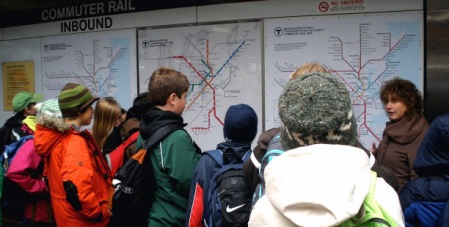 Before our first trip, Maureen Trainor at the MBTA spent a long time with me on the phone, giving me ideas, helping me figure out the best way to buy tickets, and suggesting T-shirts that would carry our message. When we arrived on her sidewalk, she took us in to tour the MBTA dispatching facilities, then whirled us through a Silver Line bus (so we could say we’d been on a bus), and personally conducted us back into the subway, to make sure we wouldn’t get lost. That year we traveled during National Public Transportation Week, and there could not have been more earnest public transportation enthusiasts, or kinder guides, anywhere.
Before our first trip, Maureen Trainor at the MBTA spent a long time with me on the phone, giving me ideas, helping me figure out the best way to buy tickets, and suggesting T-shirts that would carry our message. When we arrived on her sidewalk, she took us in to tour the MBTA dispatching facilities, then whirled us through a Silver Line bus (so we could say we’d been on a bus), and personally conducted us back into the subway, to make sure we wouldn’t get lost. That year we traveled during National Public Transportation Week, and there could not have been more earnest public transportation enthusiasts, or kinder guides, anywhere.
It helped most of all, though, that teams of wonderful parents joined us. Some had extensive experience with Boston’s public transportation system. One was a confirmed Hubway bicycle user, and could tell us about that. Another had a special connection to the person in Mayor Menino’s office in charge of promoting bicycling. Every parent contributed what he or she could, including reassurance at moments of uncertainty. (See below.)
Cautionary Tale #2 From a colleague: Two children are on a field trip. One says, “Ooooh! This is so cool!” The other says, “Don’t act too excited! They’ll make us write about it!”
 Almost all my students liked writing, in fact, but I always hoped that what we did would be textured and various enough to work for everyone. We would all have great fun traveling to and around Boston–I knew that–but rich learning experiences would be less rich if I didn’t ask them to capture their observations in language, one way or another.
Almost all my students liked writing, in fact, but I always hoped that what we did would be textured and various enough to work for everyone. We would all have great fun traveling to and around Boston–I knew that–but rich learning experiences would be less rich if I didn’t ask them to capture their observations in language, one way or another.
So, sometimes the pre-writing, before the trip, took the form of posters, in which a little language goes a long way.

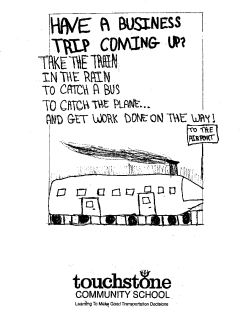 The trip book, a booklet I had created and copied for every child and adult, included invitations to sketch rather than write, along with opportunities to write lists rather than paragraphs, and also ways of recording observations by circling things on a pre-made list. (That’s a good solution for kids who get carsick if they try to write in a moving vehicle.)
The trip book, a booklet I had created and copied for every child and adult, included invitations to sketch rather than write, along with opportunities to write lists rather than paragraphs, and also ways of recording observations by circling things on a pre-made list. (That’s a good solution for kids who get carsick if they try to write in a moving vehicle.)
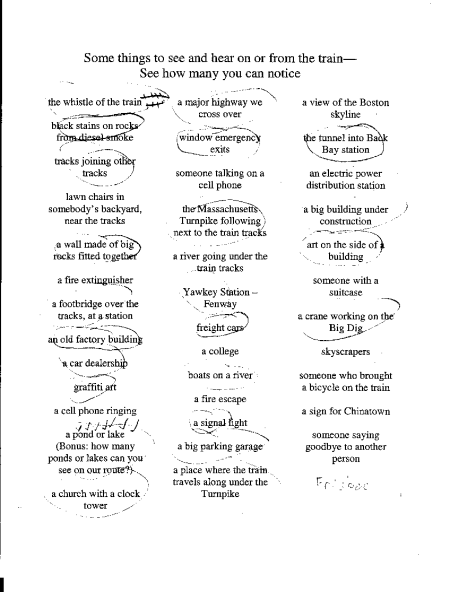 The last trip, much of our pre-writing (and research) went into the script for a video to be made with still photographs. You can see the finished product here.
The last trip, much of our pre-writing (and research) went into the script for a video to be made with still photographs. You can see the finished product here.
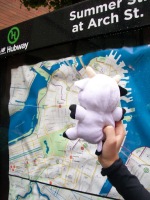 On the day itself, we accidentally left our main character, Moosey, in South Station. Oh, no! On the spot, walking down the street, we revised our script to allow for a new main character, Medium Rare (posed to the right.)
On the day itself, we accidentally left our main character, Moosey, in South Station. Oh, no! On the spot, walking down the street, we revised our script to allow for a new main character, Medium Rare (posed to the right.)
 At the end of the day, we revised our story yet again, to include an ecstatic reunion with Moosey at the station’s Lost and Found. (Both group bonding and creativity thrive on the unexpected.) Certain student voices, muttering in my ear, remind me that we missed our train back to Grafton that year. But we had a lot of South Station fun while we waited for the next train.
At the end of the day, we revised our story yet again, to include an ecstatic reunion with Moosey at the station’s Lost and Found. (Both group bonding and creativity thrive on the unexpected.) Certain student voices, muttering in my ear, remind me that we missed our train back to Grafton that year. But we had a lot of South Station fun while we waited for the next train.
 What did we carry away from all this? No matter how much fun there is in hands-on projects in general, and field trips in particular, it’s important to ask what gets learned, what gets known and understood and used. Facts, yes, many; but also a sense of the interconnected dynamics of large systems, expressed here in an NESEA (Northeast Sustainable Energy Association) worksheet.
What did we carry away from all this? No matter how much fun there is in hands-on projects in general, and field trips in particular, it’s important to ask what gets learned, what gets known and understood and used. Facts, yes, many; but also a sense of the interconnected dynamics of large systems, expressed here in an NESEA (Northeast Sustainable Energy Association) worksheet.
That first year, Stephanie Pollack, working at that time with the Conservation Law Foundation–and never a very tall person, no matter how distinguished–stood on a table in order to be heard over the lunchtime bustle at South Station. With fire and passion, grounded in research, she told us about the damage wreaked on the environment by a car-centered transportation system.
As we walked away from South Station in little clusters, all still talking about it, I asked Troy what he thought. “Oh,” he said, holding his head in a familiar gesture, “I don’t ever want to get in a car again.”
Kate and I looked at each other. We knew the field trip had worked, to get us thinking about connections and impacts and large systems. We also knew that our debrief would have to include some discussion of moments when we felt uncomfortable–because none of us could instantly make the changes in our lives to follow what we’d just heard.
 Back at school the next day, a student note-taker captured, a little chaotically, a discussion that wound up imagining reasons why a person might have to make change slowly. We were in this together: absorbing new understanding, so important it would change our lives.
Back at school the next day, a student note-taker captured, a little chaotically, a discussion that wound up imagining reasons why a person might have to make change slowly. We were in this together: absorbing new understanding, so important it would change our lives.
We only bought the special t-shirts the first year, but every time we were following their slogan: learning to make good transportation decisions, and learning that together. I wear mine to bed whenever I want to have brave dreams.




